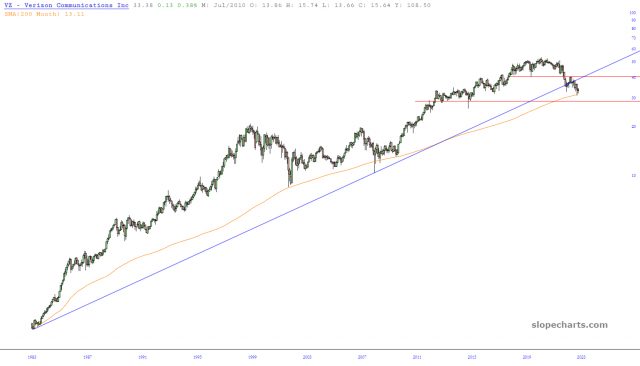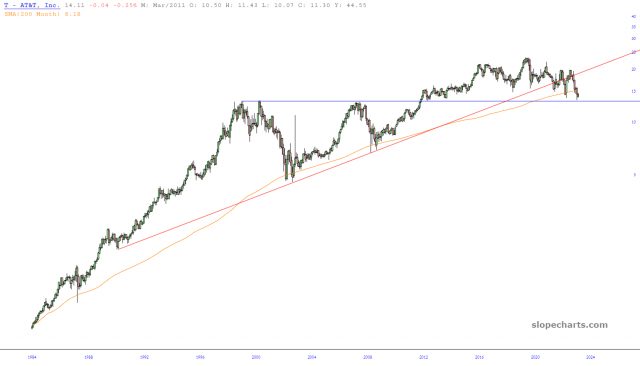3 Possible Scenarios for the US Stock Market in 2023
2023.08.17 04:02
The past year has left many bears doubting themselves. The bear impulse arguably peaked in June 2022, more than a year ago. It makes sense from a macroeconomic perspective because that’s also when ’s velocity peaked.
The preponderance of evidence still favors the bears, though. The rally in mega-cap tech stocks brought them back in line with the rest of the market. Away from tech, income-oriented dividend stocks and ETFs are turning negative in 2023, yet many have still outperformed Invesco QQQ Trust (NASDAQ:) since the top in late 2021.
The has gained less than 5% this year. All of this is consistent with rising bond yields. I could go into all the negative economic data coming out of China, Germany, and so on, but I don’t need it. Higher rates alone will trigger a major bear market.
Psychology plays a huge role in market moves. Still, investors and, more so, investment managers do make rational allocation decisions. For every increase in yields, U.S. treasury bonds become more attractive relative to stocks. A bear market will follow higher interest rates because money will flow from stocks to bonds.
There are three main scenarios ahead:
1. The bears are wrong
Goldilocks is coming back. Tech’s bull run isn’t over. Perhaps the price inflation was caused by the lockdowns, and prices will fall back to 2019 levels. Long-term interest rates are going back below 2%, perhaps the is going to zero if the bond bull isn’t over. Maybe a combination of AI, onshoring, and low inflation will unleash a new boom era in the USA.
2. A smaller bear than in 2000 or 2008
Maybe all that happens is a retest of last year’s lows, making for around 3 years of sideways trading. In this case, I expect emerging markets and energy, as two examples, will not make new lows. They would become bull market leaders in a new higher-inflation boom period. An echo of the 2000s.
3. This is a once-a-century bear market
Stocks, houses, and financial assets have exploded in price over the past 40 years. At higher interest rates, they will implode. Based on current interest rates, houses will be as affordable as they were in 2019 if they drop 20 to 30% in price. If interest rates go higher, it triggers a recession. If interest rates and inflation go higher, then wages will explode higher as younger workers revolt.
There are a lot of moving pieces in the economy, but they filter down into asset prices. Where’s the best place to look for a signal? One area is the widow and orphan stocks of 2023. Stocks such as Verizon (NYSE:). Verizon $VZ is a high-yield stock (paying 7.61% today) favored by many income investors.
It behaves like a utility stock, but both it and AT&T (NYSE:) have performed worse the past couple of years because their yields are higher than in the utilities sector. They have been pulled lower by rising rates because U.S. treasury bonds offer much better yields. In May 2020, Verizon yielded 4.2%. Today, the 10-year Treasury yields 4.2%.

Verizon Inc Chart
Verizon is also one of many stocks such as Clorox (NYSE:), 3M Company (NYSE:), Nike (NYSE:), FedEx (NYSE:) and Pfizer (NYSE:) that are near, below or bounced off 40+ year supporting trendlines. Verizon has also bounced off its 200-month moving average. Only in October 2008 was the 200-month meaningfully broken, and Verizon has never trended below it.

AT&T Stock Chart
Three scenarios, assuming there isn’t single-stock risk or sector risk (the lead phone cable story appears to be mostly BS.)
- Bull: Verizon bounces soon or soon after, making a slightly lower low.
- Minor bear: Verizon bounces around $28 per share and a 9% yield; it probably makes a low before the broader market because bond yields start falling fast.
- Major bear: Verizon breaks $28 and heads towards $20 or prices below. If there’s no single-stock reason for a plunge in Verizon, major blue chip stocks also break support lines and moving averages that have held for the past 20 to 40 years.








